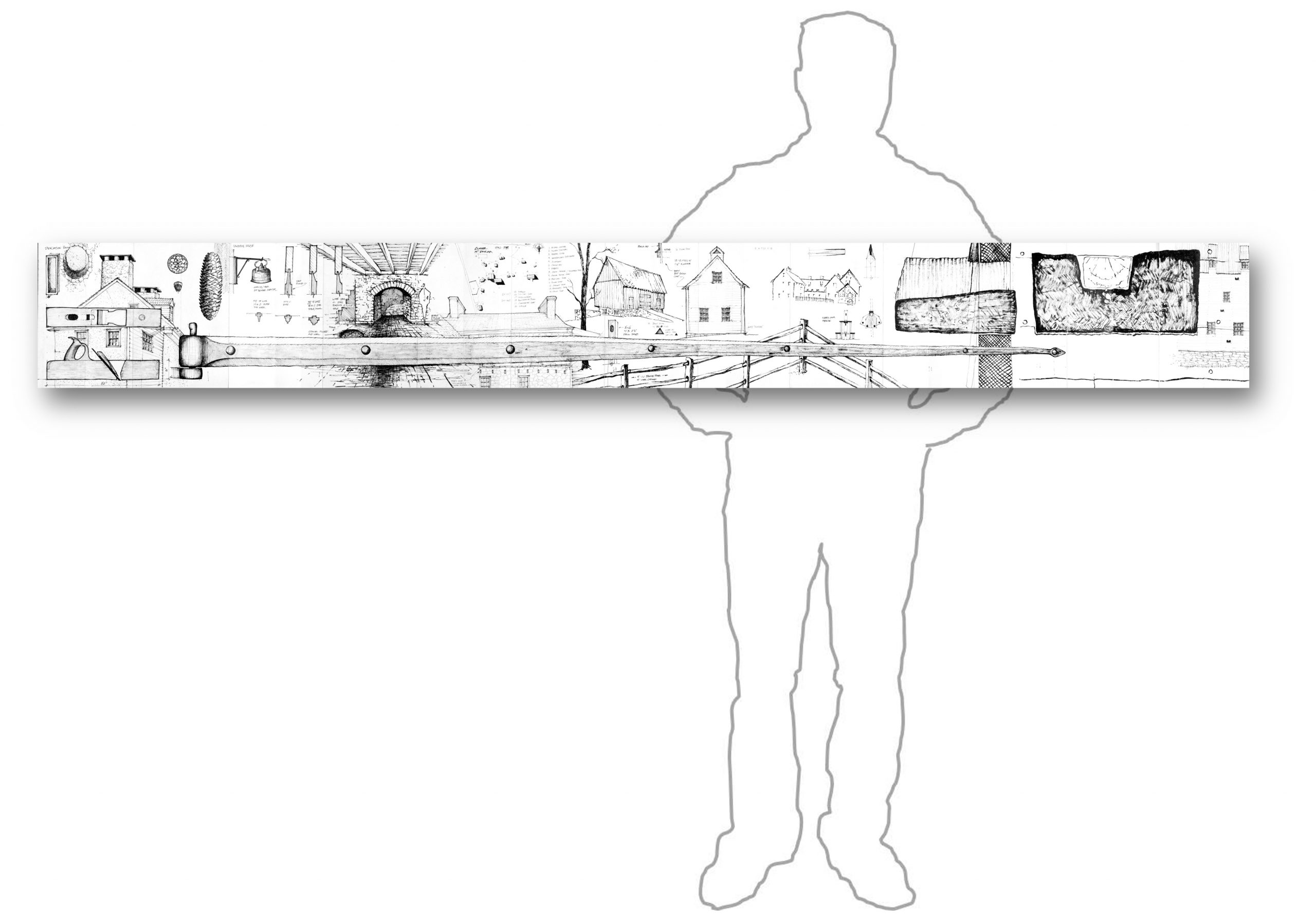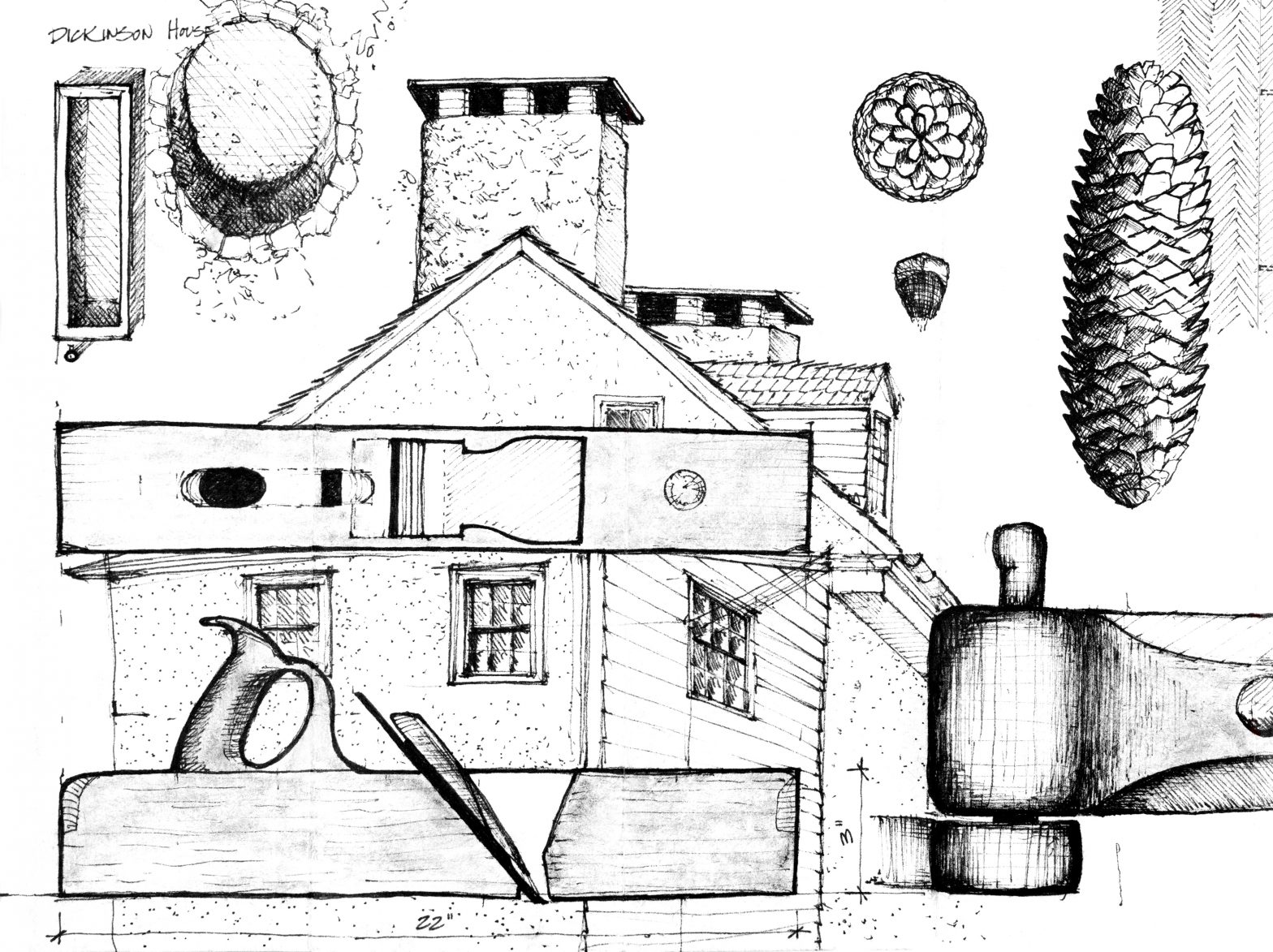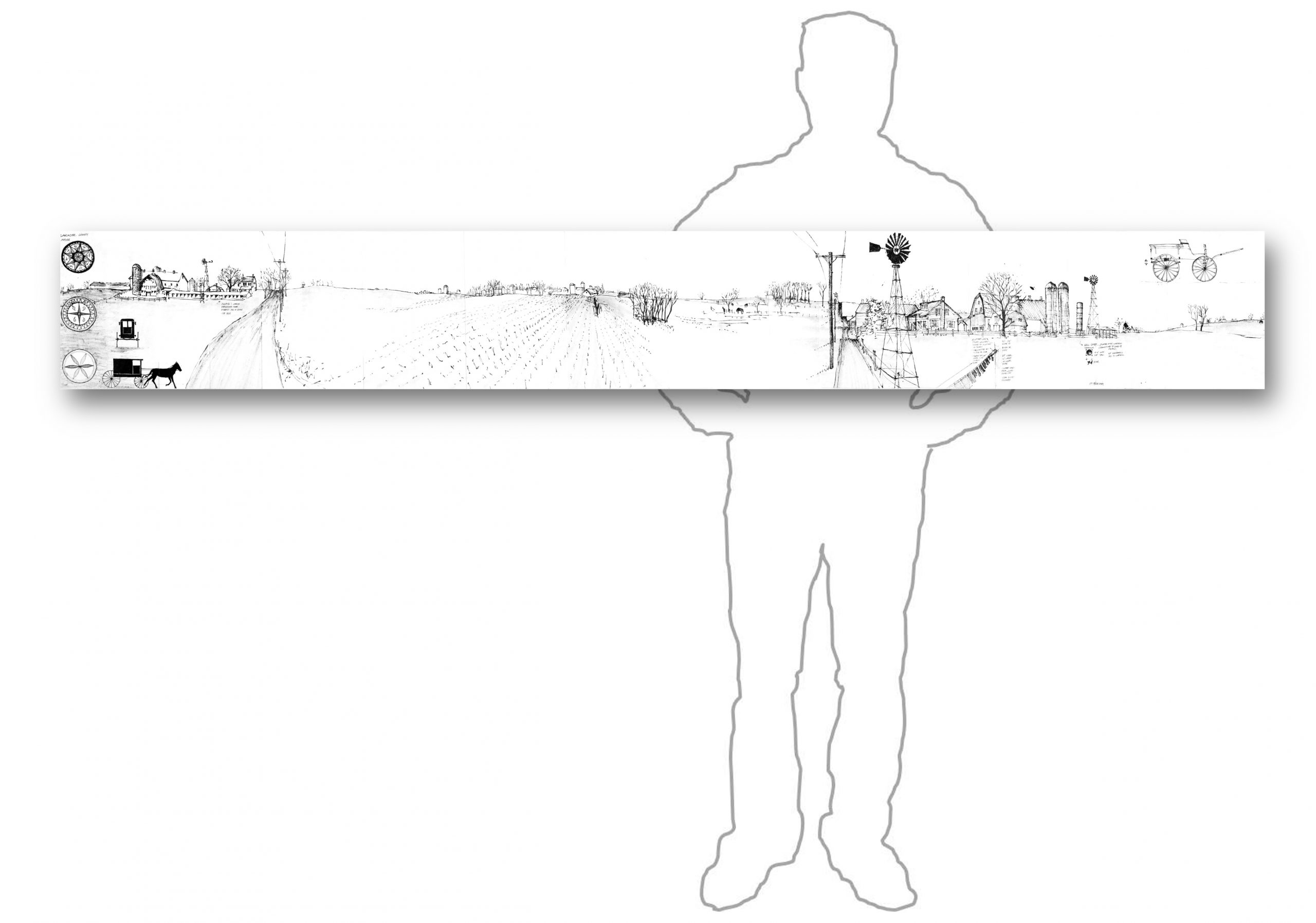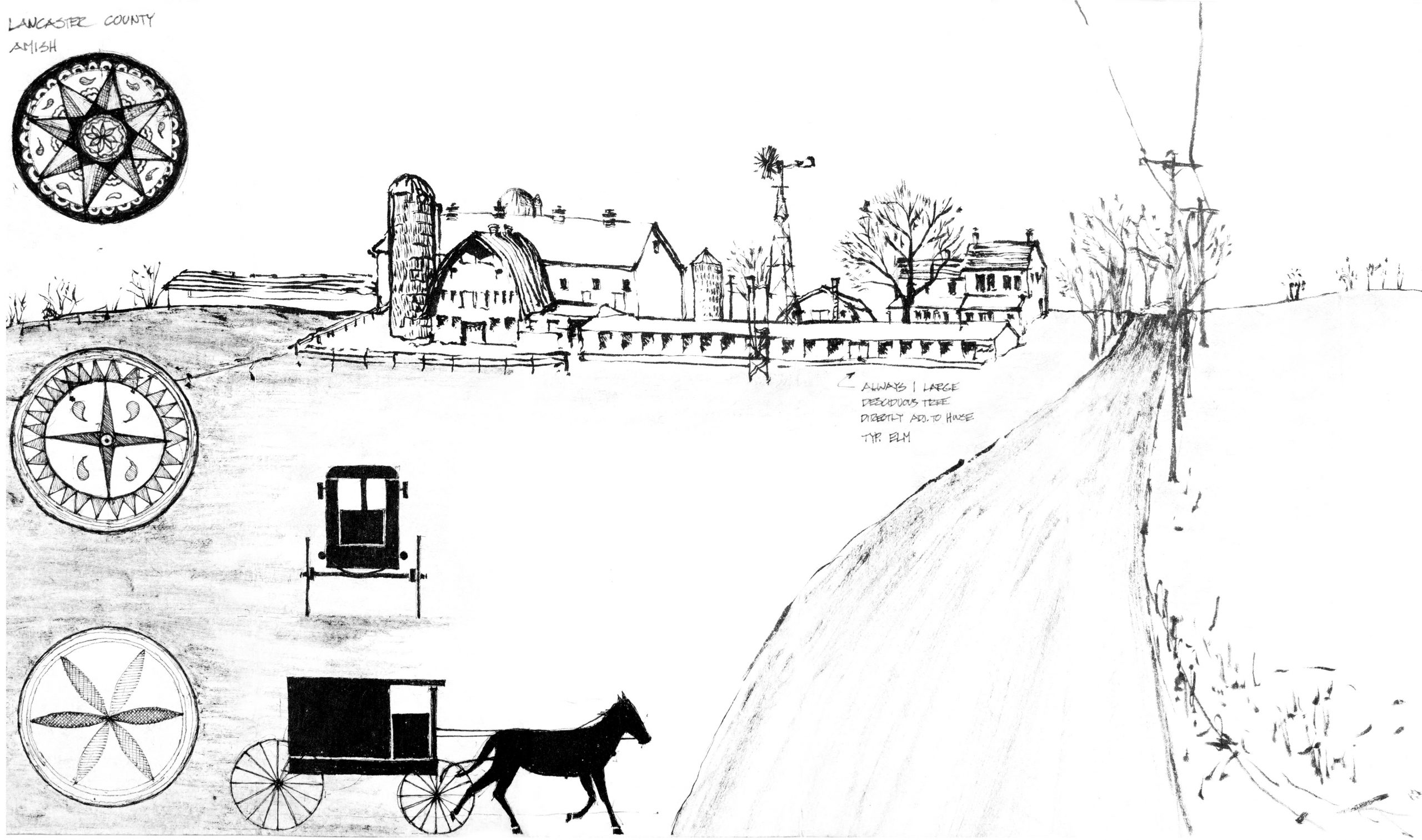7.22.USA-6-detail-a Highlights Relevant to Sustainable Design:
We can find inspiration in tools and natural structure.
Over the course of making these drawings in the field, I would occasionally sit down rather than draw standing up. Here are two cases of a hand planer and pinecone, found near where I took a seat. The planer interested me in its simplicity, a block of wood with a metal blade, brace, cavity, and handle.
The pinecone interested me, because I had seen them my whole life, including in the small backyard of our row house in Washington, DC, where I grew up. I had seen many different shapes and sizes, from almost spherical ones to long, skinny ones. I had never really held one up close to look, draw, and take apart. I learned that the seeds are inside, and the flaps or finlike elements protect the seeds. When you see a pinecone that is green and closed, it is holding the seeds and probably still on the tree. If you want to get the seeds out, you may need to heat it up. By the time the pinecone falls from the tree, it is usually dry and open. The natural design is pretty logical. As the pinecone opens, gravity takes the seeds to the ground, or the wind blows the seeds. Some birds eat the seeds, and some new evergreen trees grow from the cycle.
In this drawing, the plane tool shaves the wood, and the pinecone is a delivery mechanism to produce more future wood. Look closer at things that we may take for granted. Perhaps the storage capacity of the pinecone could inspire the design of cells in a high-efficiency battery design that releases energy on demand in response to a factor such as engine heat in a car.
7.21.USA-6-Horizontal-with-Figure
The figure outline in this image is for scale to illustrate the size of the fold-out field drawing. The descriptions of certain key elements and insights are included with the accompanying drawings in this section.

Author and illustrator: Charlie Szoradi is an architect, inventor, and the CEO of Independence LED Lighting. He writes about many other topics related to natural elements through his extensive travels around the world.
If you have found this posting online, it is an excerpt from Mr. Szoradi’s book Learn from Looking that served as the inspiring seed content for this drawing share resource. For additional drawings and insights on other natural structures, we hope that you enjoy exploring LearnfromLooking.com. You can search via general terms such as sustainability as well as narrower terms such as pinecone and natural design.
This description is one of many examples of the learning benefits for children that come from pausing to learn from looking at the details in the world around us. If you are parent or grandparent of grade school children, you may enjoy reading more in the Learn from Looking book about ways to inspire children to take some time away from the ubiquitous screens that often dominate the hours of their days.



